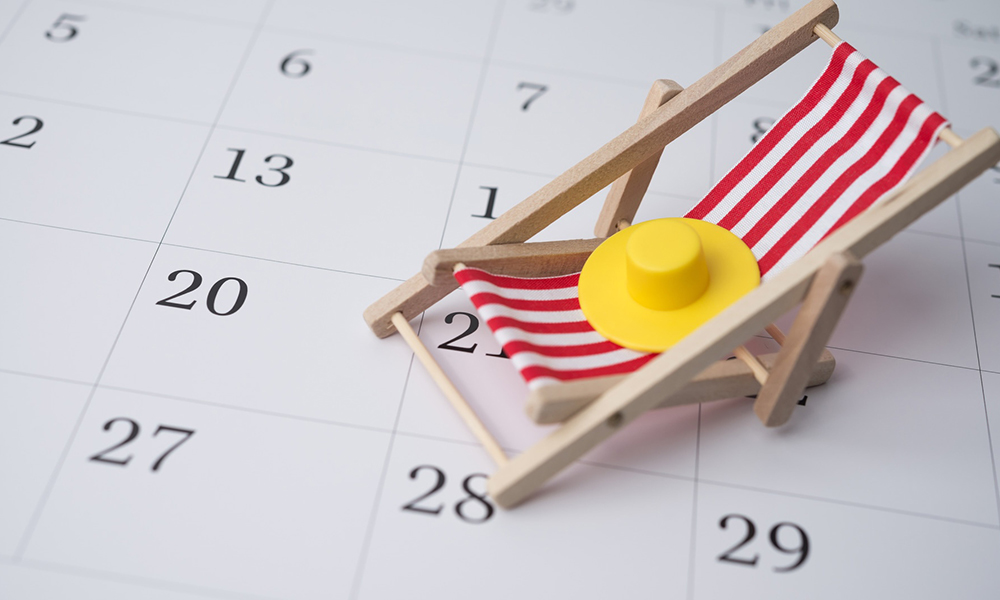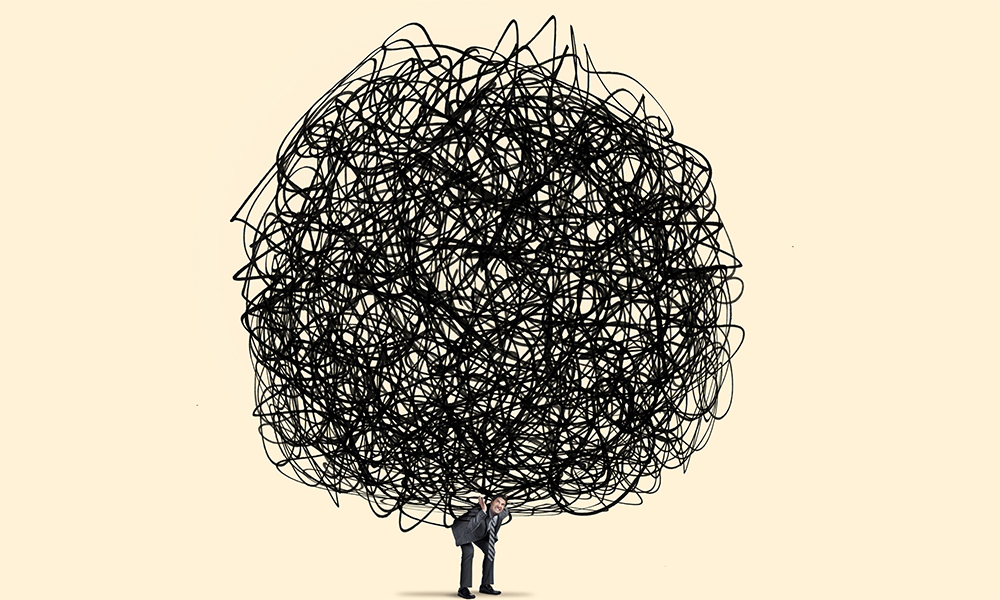Getting inspired and having a dream is a great start – but it isn’t enough to ensure success. Many people understand the importance of setting goals, yet only a small minority are able to actually follow through and reach the finish line. The vast majority either can’t muster up the energy to get started or tend to lose momentum somewhere along the way, leading to a growing heap of discarded dreams.
A study on New Year’s resolutions conducted by the University of Scranton found that only 19 percent of subjects were able to stick to their goals over a two-year period. In fact, 23 percent gave up on their resolution after just one week. The inability to create and sustain momentum is a crucial roadblock. It holds you back from building the life you want – whether it’s a healthy mind and body, a purposeful career, or fulfilling personal relationships.
So, this week, my message focuses on WOOP (Wish, Outcome, Obstacle, Plan), a science-backed mental strategy that can help you accomplish your goals. Let’s dismantle some common myths as well as discuss the step-by-step methodology to help you transform dreams into reality.
Why positive visualisation (by itself) doesn’t work
One widely-recommended tip is to visualise your goal and imagine that you’ve achieved it. When used in isolation, however, this strategy can be counterproductive. The problem with positive visualization is that it fools your brain into believing you’ve already achieved success, creating a relaxing and lethargic effect. Those warm and fuzzy feelings make you feel happy and contented, rather than energised and motivated to take action.
Dr. Gabriele Oettingen, a professor of psychology at New York University and the University of Hamburg, has spent 20 years researching this topic. As she explains in an interview with NPR:
These positive fantasies, they seduce us to feel already accomplished, and they take our energy away. So we found that, for example, the more positively women enrolled in a weight reduction program fantasized about their success in the program, the fewer pounds they lost three months later, one year later, two years later….
And I don’t say these are bad things at all because they are the beginning of action. But they are only the beginning. They give action the direction, but they don’t give action the necessary energy.
No matter how clearly you can picture your ideal future, you still need to connect it with your present reality in order to spark action. You also need to plan for the inevitable hurdles on your journey.
Grounding your vision with these practical aspects helps you build momentum and increases your chances of success.
A two-pronged mental strategy
In her book, Rethinking Positive Thinking: Inside the New Science of Motivation, Dr. Oettingen offers a two-pronged tool, designed to create motivation and boost follow-through:
First, mental contrasting helps you compare where you’d ideally like to be versus where you are right now and the obstacles that stand in your way. This brings about the realisation that you won’t get anywhere if you don’t get started! Hence, mental contrasting turns dreams into fuel and triggers the need to take action.
Next, implementation intentions help you navigate roadblocks. All too often, people put on rose-coloured glasses and refuse to consider the likely obstacles that lie ahead – this is dismissed as “thinking negatively” or “being pessimistic”. In this unprepared state, even minor hurdles can cause you to give up. To avoid getting easily derailed, it’s important to accept reality and plan your responses to specific problems. This way, you’ll be able to respond instantly instead of getting confused and overwhelmed.
WOOP your wishes
Formally called “mental contrasting with implementation intentions”, this method is popularly known as WOOP (Wish, Outcome, Obstacle, Plan). It can be used to accomplish all kinds of goals – cultivating a new habit, getting a passion project off the ground or even reinventing your career.
Adopting this mental strategy is more effective than depending solely on willpower. WOOP works on your nonconscious mind, establishing automatic responses to address or circumvent obstacles. In her book, Dr. Oettingen elaborates:
If you’re new to WOOP, be sure to try it in the morning. I do so and find that it serves as a great way of preparing for the day. In the evening, I’ll remember my morning’s WOOP and observe how the day went; often, I’ll find that my behavior was very much guided by my WOOPed wishes and the steps I identified to prevent or overcome obstacles, without intending or realizing it. You’ll really understand the power of WOOP as a way of programming yourself cognitively; you’ll feel as if an invisible hand guided you during the day.
Here is the four-step process to WOOP your dream. Dr. Oettingen recommends following the tried-and-tested sequence of steps. The process takes around 15-20 minutes the first time around. Later, with practice, you’ll be able to complete it in just a few minutes. So, grab a pen and paper, disconnect from all distractions and let’s get started.
1. W – Wish.
Identify a dream that you’d like to achieve, be it personal or professional. The timeline could be a year, a month, a week or even a day. Write your wish down in 3-6 words, being as specific as possible.
Keep in mind that your wish should be challenging yet attainable for you. If it feels unrealistic, you’ll simply end up feeling overwhelmed instead of inspired. As Dr. Oettingen notes in her book:
WOOP won’t help you live more fully if your wish is to live on planet Neptune or become a billionaire within a year.
2. O – Outcome.
Next, think about what it would be like if your wish came true. Apply the power of positive thinking here, and let your imagination run free. What is the best possible outcome? What benefits would you receive? How would you feel? Take a few minutes to envision it deeply and vividly.
3. O – Obstacle.
Now that you’ve built your castle in the air, it’s time to ground it in reality. Name the hurdles you’re likely to face and write them down. As Dr. Oettingen notes, WOOP involves:
Making the most of our fantasies by brushing them up against the very thing most of us are taught to ignore or diminish: the obstacles that stand in our way.
Avoid focusing on external problems over which you have no control. Instead, bring your attention to critical internal or self-created obstacles that could block your progress. This may include emotions, behaviour patterns, bad habits and preconceived notions. In your mind, picture how the issue will arise and the way in which it will likely play out. As Dr. Oettingen explains:
Sometimes it takes a little bit of thought and patience to really understand your inner barriers and how you behave or react unconstructively. Sticking with the process can be hard at first since we’re so often dissuaded from taking honest looks at ourselves, but finding your most relevant obstacle really pays off.
When assessing obstacles, you might just discover that the wish you thought was within reach is actually not feasible. This realisation allows you to release that fantasy and go on to smarter, more realistic goals.
4. P – Plan.
The final step is forming a response plan in the form of an if-then Identify a specific action you can take to overcome each hurdle. Let’s say your goal is to start working out on a daily basis. If your obstacle is feeling too lazy, then you could schedule prepaid non-cancellable sessions with a trainer. If your obstacle is being too busy in the mornings, then you could organise breakfast and get your work clothes ready the night before.
As an example, here is a WOOPed goal from executive coach Michael Balchan:
Wish: To be present with each person who I share a moment with.
Outcome: I will be in loving relationships and experience more joy.
Obstacle: I get distracted by my phone.
Plan: IF I’m going into a shared experience (meal, conversation, meeting, etc.) THEN I will put my phone on airplane mode and leave it in my bag or pocket.
WOOP is a simple, effective and highly versatile technique. With clarity and empowerment as its twin pillars, it works across different age-groups, settings and cultures. You can use it to keep your annual resolutions on track, or apply it every morning to your top goal for the day. Dr. Oettingen sums up the rewards of her tool:
By experiencing our dreams in our minds and facing reality, we can address our fears, make concrete plans, and gain energy to take action.
If you’d like to dive into the finer details and research behind this mental strategy, I recommend reading Dr. Oettingen’s book. You can also practice WOOP or download the app at www.woopmylife.org.








Comments